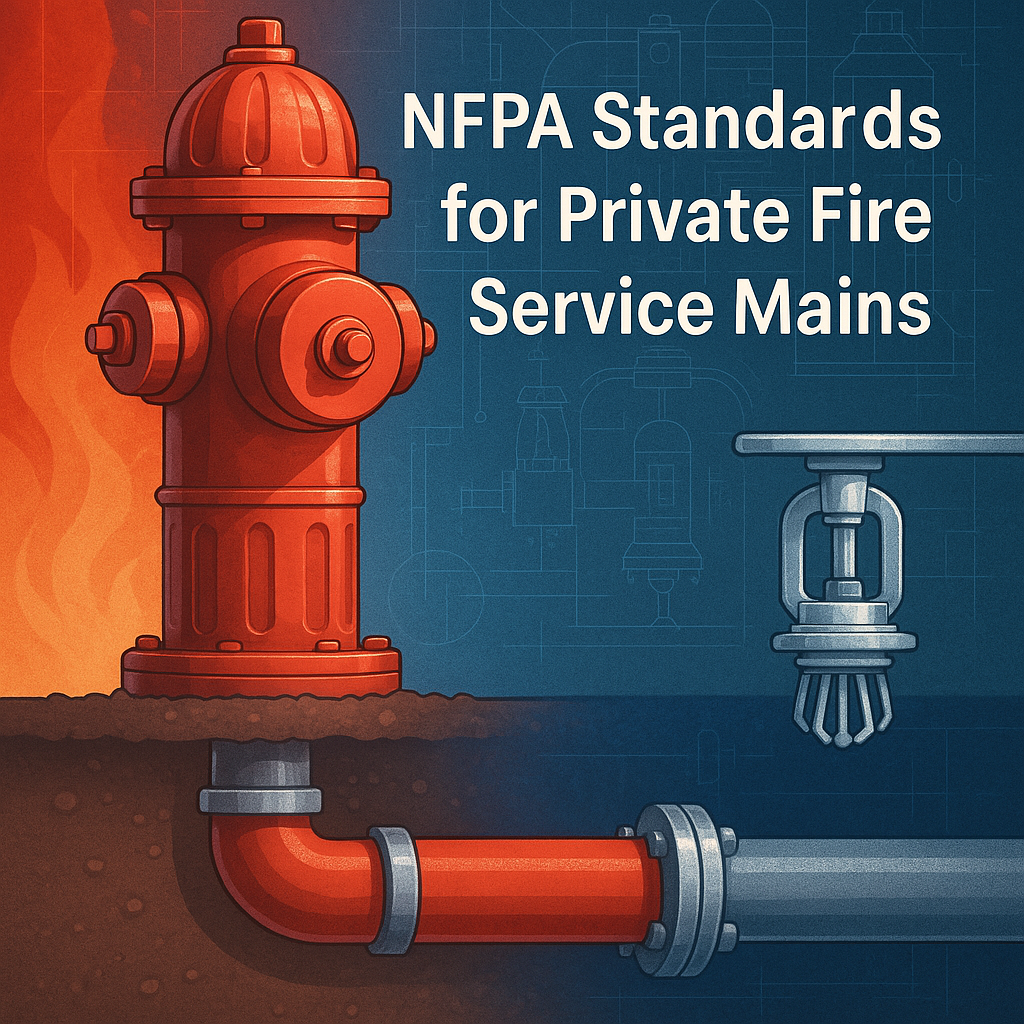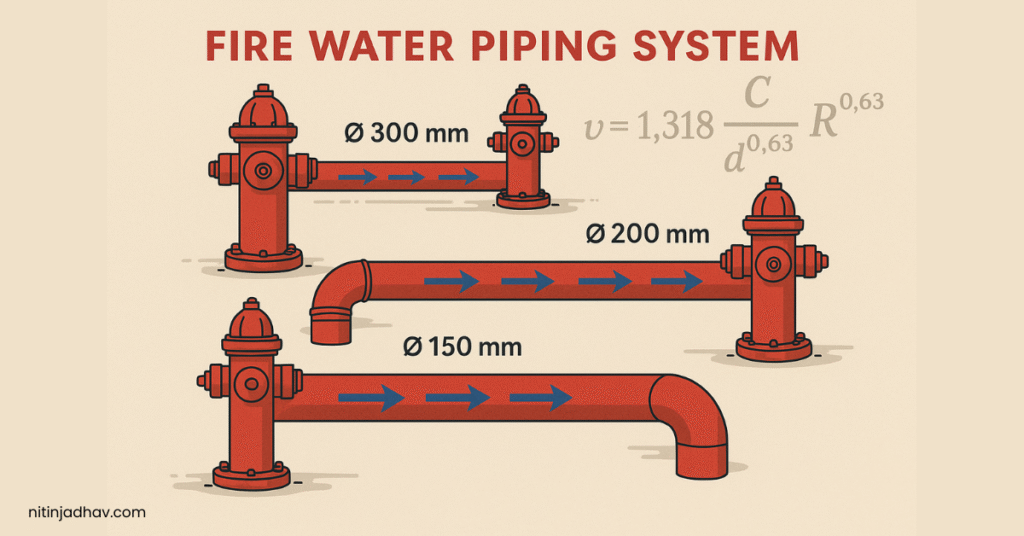When it comes to fire safety infrastructure, private fire service mains play a critical role in ensuring that water is delivered effectively to fire protection systems. The NFPA (National Fire Protection Association) provides clear guidelines to ensure these systems are designed and installed to meet safety and performance standards.
In this article, we’ll explore the scope and sizing requirements for private fire service mains as outlined in the NFPA standard, helping engineers, safety professionals, and facility managers stay compliant and informed.
🔍 Scope of the Standard
The NFPA standard outlines the minimum requirements for the installation of private fire service mains and their appurtenances. These include:
- Automatic sprinkler systems
- Open sprinkler systems
- Water spray fixed systems
- Foam systems
- Private hydrants
- Monitor nozzles or standpipe systems
- Hose houses
This standard also applies to combined service mains that carry water for both fire protection and other uses.
❌ What the Standard Does Not Cover
The following are excluded from the scope:
- Mains under the control of a water utility
- Privately owned mains operated as a water utility
- Underground mains serving systems under 4 inches (100 mm) and designed as per NFPA 13R
- Underground mains designed as per NFPA 13D.
📏 Sizing Requirements for Fire Mains
1. Hydraulic Calculations Are Key
All private fire service mains must be hydraulically calculated to ensure they can meet the total system demand at the required pressure.
Also Read: Fire Water Pipe Size Calculation – Step-by-Step Guide with Formula, Example & Calculator
2. Mains Not Supplying Hydrants
For systems that do not include hydrants, pipe sizes less than 6 inches (150 mm) are permitted, but only if:
- They serve specific systems like sprinklers, foam, or standpipes.
- Hydraulic calculations confirm adequate pressure and flow.
- Non-calculated systems must have mains at least as large as the riser.
🧠 Why This Matters
Properly sized and scoped fire service mains are essential for:
- Effective fire suppression
- System reliability
- Regulatory compliance
Ignoring these standards can lead to system failure during emergencies and potential legal liabilities.
🔗 Related Resources
- Fire Hydrant System Design: Key Considerations
- Hydraulic Calculations for Fire Protection Systems
- Foam Fire Suppression Systems: When and Why to Use Them
✅ Conclusion
Adhering to NFPA standards for private fire service mains ensures that your fire protection systems are safe, efficient, and compliant. Whether you’re designing a new system or auditing an existing one, understanding these requirements is crucial.
For more expert insights on fire safety engineering, stay tuned to NitinJadhav.com.


